Chaoning Zhang
Fast SAM2 with Text-Driven Token Pruning
Dec 24, 2025Abstract:Segment Anything Model 2 (SAM2), a vision foundation model has significantly advanced in prompt-driven video object segmentation, yet their practical deployment remains limited by the high computational and memory cost of processing dense visual tokens across time. The SAM2 pipelines typically propagate all visual tokens produced by the image encoder through downstream temporal reasoning modules, regardless of their relevance to the target object, resulting in reduced scalability due to quadratic memory attention overhead. In this work, we introduce a text-guided token pruning framework that improves inference efficiency by selectively reducing token density prior to temporal propagation, without modifying the underlying segmentation architecture. Operating after visual encoding and before memory based propagation, our method ranks tokens using a lightweight routing mechanism that integrates local visual context, semantic relevance derived from object-centric textual descriptions (either user-provided or automatically generated), and uncertainty cues that help preserve ambiguous or boundary critical regions. By retaining only the most informative tokens for downstream processing, the proposed approach reduces redundant computation while maintaining segmentation fidelity. Extensive experiments across multiple challenging video segmentation benchmarks demonstrate that post-encoder token pruning provides a practical and effective pathway to efficient, prompt-aware video segmentation, achieving up to 42.50 percent faster inference and 37.41 percent lower GPU memory usage compared to the unpruned baseline SAM2, while preserving competitive J and F performance. These results highlight the potential of early token selection to improve the scalability of transformer-based video segmentation systems for real-time and resource-constrained applications.
Understanding Chain-of-Thought in Large Language Models via Topological Data Analysis
Dec 22, 2025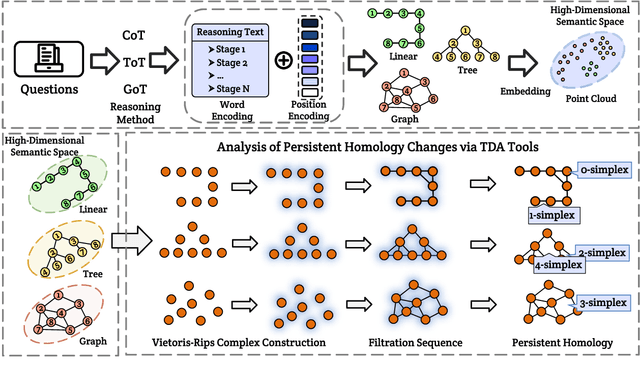
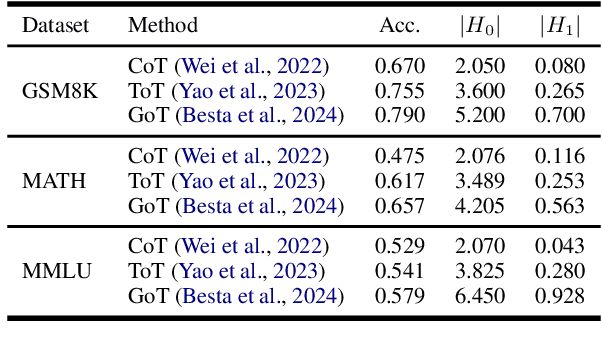
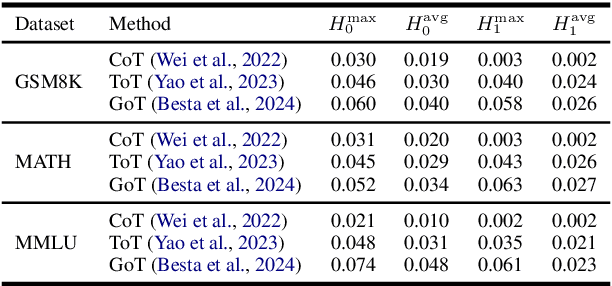
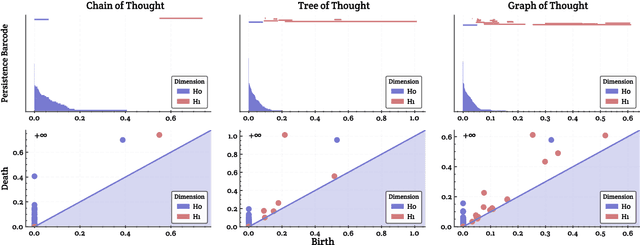
Abstract:With the development of large language models (LLMs), particularly with the introduction of the long reasoning chain technique, the reasoning ability of LLMs in complex problem-solving has been significantly enhanced. While acknowledging the power of long reasoning chains, we cannot help but wonder: Why do different reasoning chains perform differently in reasoning? What components of the reasoning chains play a key role? Existing studies mainly focus on evaluating reasoning chains from a functional perspective, with little attention paid to their structural mechanisms. To address this gap, this work is the first to analyze and evaluate the quality of the reasoning chain from a structural perspective. We apply persistent homology from Topological Data Analysis (TDA) to map reasoning steps into semantic space, extract topological features, and analyze structural changes. These changes reveal semantic coherence, logical redundancy, and identify logical breaks and gaps. By calculating homology groups, we assess connectivity and redundancy at various scales, using barcode and persistence diagrams to quantify stability and consistency. Our results show that the topological structural complexity of reasoning chains correlates positively with accuracy. More complex chains identify correct answers sooner, while successful reasoning exhibits simpler topologies, reducing redundancy and cycles, enhancing efficiency and interpretability. This work provides a new perspective on reasoning chain quality assessment and offers guidance for future optimization.
Beyond Whole Dialogue Modeling: Contextual Disentanglement for Conversational Recommendation
Apr 24, 2025Abstract:Conversational recommender systems aim to provide personalized recommendations by analyzing and utilizing contextual information related to dialogue. However, existing methods typically model the dialogue context as a whole, neglecting the inherent complexity and entanglement within the dialogue. Specifically, a dialogue comprises both focus information and background information, which mutually influence each other. Current methods tend to model these two types of information mixedly, leading to misinterpretation of users' actual needs, thereby lowering the accuracy of recommendations. To address this issue, this paper proposes a novel model to introduce contextual disentanglement for improving conversational recommender systems, named DisenCRS. The proposed model DisenCRS employs a dual disentanglement framework, including self-supervised contrastive disentanglement and counterfactual inference disentanglement, to effectively distinguish focus information and background information from the dialogue context under unsupervised conditions. Moreover, we design an adaptive prompt learning module to automatically select the most suitable prompt based on the specific dialogue context, fully leveraging the power of large language models. Experimental results on two widely used public datasets demonstrate that DisenCRS significantly outperforms existing conversational recommendation models, achieving superior performance on both item recommendation and response generation tasks.
Syzygy of Thoughts: Improving LLM CoT with the Minimal Free Resolution
Apr 16, 2025
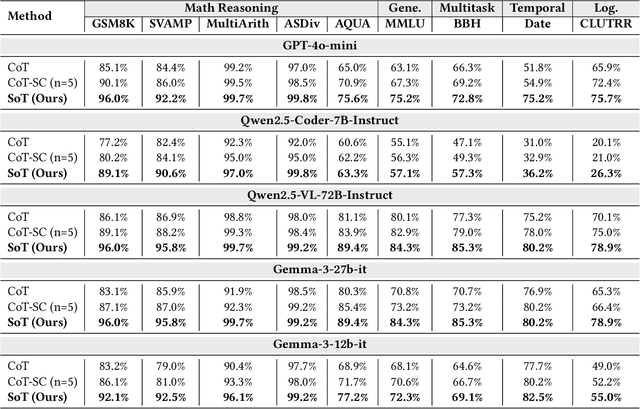
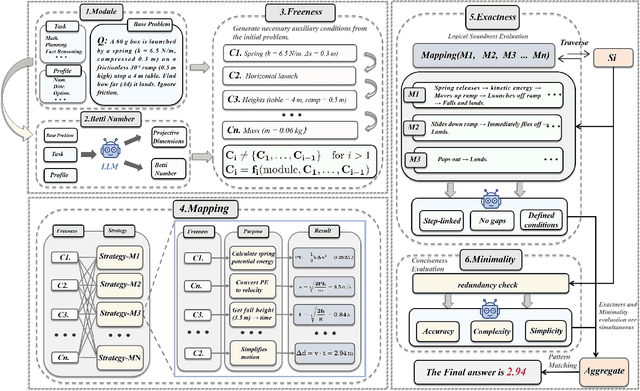

Abstract:Chain-of-Thought (CoT) prompting enhances the reasoning of large language models (LLMs) by decomposing problems into sequential steps, mimicking human logic and reducing errors. However, complex tasks with vast solution spaces and vague constraints often exceed the capacity of a single reasoning chain. Inspired by Minimal Free Resolution (MFR) in commutative algebra and algebraic geometry, we propose Syzygy of Thoughts (SoT)-a novel framework that extends CoT by introducing auxiliary, interrelated reasoning paths. SoT captures deeper logical dependencies, enabling more robust and structured problem-solving. MFR decomposes a module into a sequence of free modules with minimal rank, providing a structured analytical approach to complex systems. This method introduces the concepts of "Module", "Betti numbers","Freeness", "Mapping", "Exactness" and "Minimality", enabling the systematic decomposition of the original complex problem into logically complete minimal subproblems while preserving key problem features and reducing reasoning length. We tested SoT across diverse datasets (e.g., GSM8K, MATH) and models (e.g., GPT-4o-mini, Qwen2.5), achieving inference accuracy that matches or surpasses mainstream CoTs standards. Additionally, by aligning the sampling process with algebraic constraints, our approach enhances the scalability of inference time in LLMs, ensuring both transparent reasoning and high performance. Our code will be publicly available at https://github.com/dlMARiA/Syzygy-of-thoughts.
Exploring Kernel Transformations for Implicit Neural Representations
Apr 07, 2025Abstract:Implicit neural representations (INRs), which leverage neural networks to represent signals by mapping coordinates to their corresponding attributes, have garnered significant attention. They are extensively utilized for image representation, with pixel coordinates as input and pixel values as output. In contrast to prior works focusing on investigating the effect of the model's inside components (activation function, for instance), this work pioneers the exploration of the effect of kernel transformation of input/output while keeping the model itself unchanged. A byproduct of our findings is a simple yet effective method that combines scale and shift to significantly boost INR with negligible computation overhead. Moreover, we present two perspectives, depth and normalization, to interpret the performance benefits caused by scale and shift transformation. Overall, our work provides a new avenue for future works to understand and improve INR through the lens of kernel transformation.
A Complete Survey on LLM-based AI Chatbots
Jun 17, 2024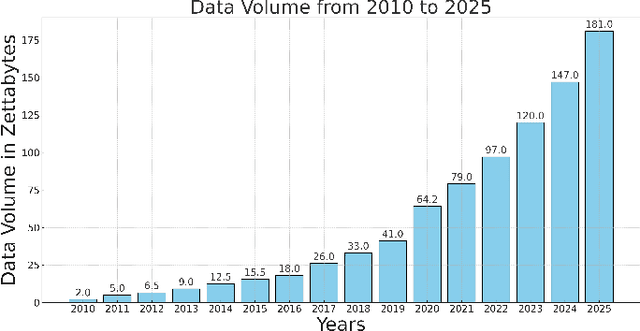
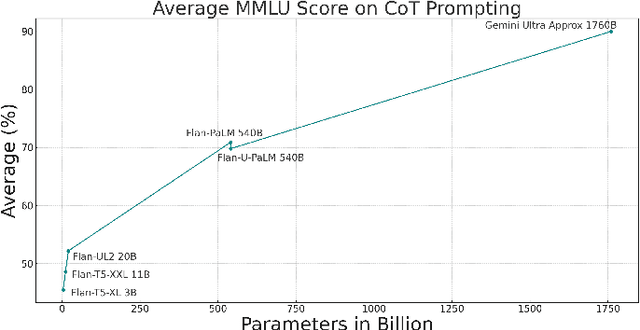
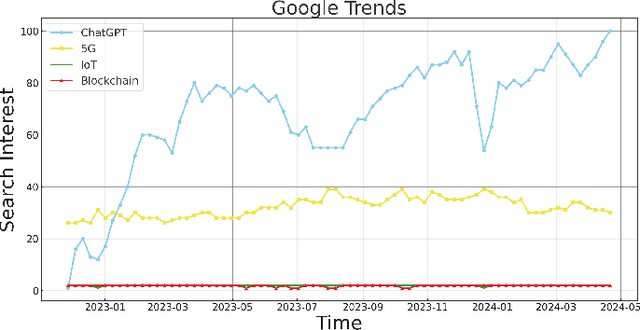
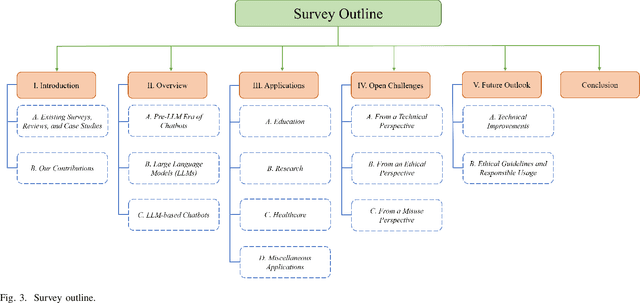
Abstract:The past few decades have witnessed an upsurge in data, forming the foundation for data-hungry, learning-based AI technology. Conversational agents, often referred to as AI chatbots, rely heavily on such data to train large language models (LLMs) and generate new content (knowledge) in response to user prompts. With the advent of OpenAI's ChatGPT, LLM-based chatbots have set new standards in the AI community. This paper presents a complete survey of the evolution and deployment of LLM-based chatbots in various sectors. We first summarize the development of foundational chatbots, followed by the evolution of LLMs, and then provide an overview of LLM-based chatbots currently in use and those in the development phase. Recognizing AI chatbots as tools for generating new knowledge, we explore their diverse applications across various industries. We then discuss the open challenges, considering how the data used to train the LLMs and the misuse of the generated knowledge can cause several issues. Finally, we explore the future outlook to augment their efficiency and reliability in numerous applications. By addressing key milestones and the present-day context of LLM-based chatbots, our survey invites readers to delve deeper into this realm, reflecting on how their next generation will reshape conversational AI.
FedCCL: Federated Dual-Clustered Feature Contrast Under Domain Heterogeneity
Apr 14, 2024



Abstract:Federated learning (FL) facilitates a privacy-preserving neural network training paradigm through collaboration between edge clients and a central server. One significant challenge is that the distributed data is not independently and identically distributed (non-IID), typically including both intra-domain and inter-domain heterogeneity. However, recent research is limited to simply using averaged signals as a form of regularization and only focusing on one aspect of these non-IID challenges. Given these limitations, this paper clarifies these two non-IID challenges and attempts to introduce cluster representation to address them from both local and global perspectives. Specifically, we propose a dual-clustered feature contrast-based FL framework with dual focuses. First, we employ clustering on the local representations of each client, aiming to capture intra-class information based on these local clusters at a high level of granularity. Then, we facilitate cross-client knowledge sharing by pulling the local representation closer to clusters shared by clients with similar semantics while pushing them away from clusters with dissimilar semantics. Second, since the sizes of local clusters belonging to the same class may differ for each client, we further utilize clustering on the global side and conduct averaging to create a consistent global signal for guiding each local training in a contrastive manner. Experimental results on multiple datasets demonstrate that our proposal achieves comparable or superior performance gain under intra-domain and inter-domain heterogeneity.
Logit Calibration and Feature Contrast for Robust Federated Learning on Non-IID Data
Apr 10, 2024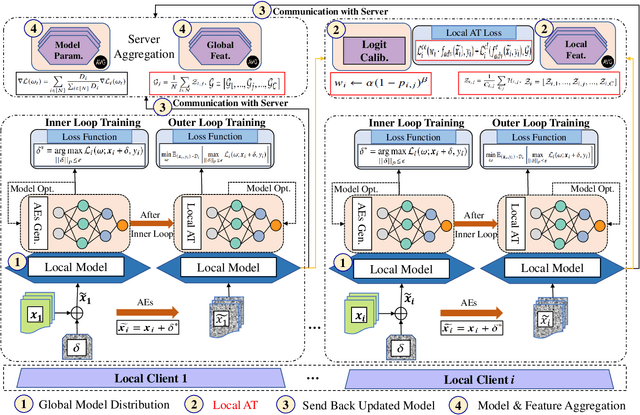
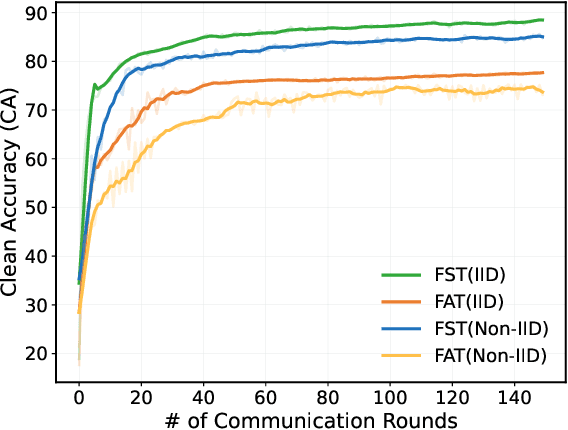


Abstract:Federated learning (FL) is a privacy-preserving distributed framework for collaborative model training on devices in edge networks. However, challenges arise due to vulnerability to adversarial examples (AEs) and the non-independent and identically distributed (non-IID) nature of data distribution among devices, hindering the deployment of adversarially robust and accurate learning models at the edge. While adversarial training (AT) is commonly acknowledged as an effective defense strategy against adversarial attacks in centralized training, we shed light on the adverse effects of directly applying AT in FL that can severely compromise accuracy, especially in non-IID challenges. Given this limitation, this paper proposes FatCC, which incorporates local logit \underline{C}alibration and global feature \underline{C}ontrast into the vanilla federated adversarial training (\underline{FAT}) process from both logit and feature perspectives. This approach can effectively enhance the federated system's robust accuracy (RA) and clean accuracy (CA). First, we propose logit calibration, where the logits are calibrated during local adversarial updates, thereby improving adversarial robustness. Second, FatCC introduces feature contrast, which involves a global alignment term that aligns each local representation with unbiased global features, thus further enhancing robustness and accuracy in federated adversarial environments. Extensive experiments across multiple datasets demonstrate that FatCC achieves comparable or superior performance gains in both CA and RA compared to other baselines.
Towards Understanding Dual BN In Hybrid Adversarial Training
Mar 28, 2024


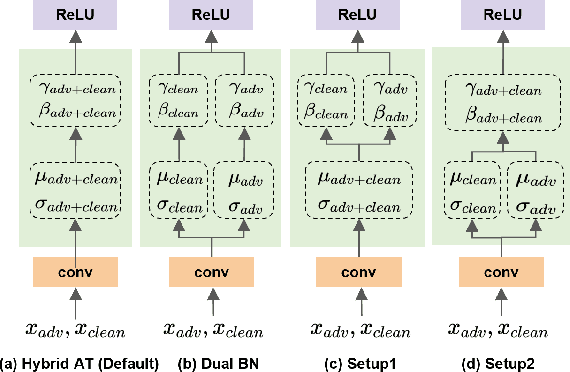
Abstract:There is a growing concern about applying batch normalization (BN) in adversarial training (AT), especially when the model is trained on both adversarial samples and clean samples (termed Hybrid-AT). With the assumption that adversarial and clean samples are from two different domains, a common practice in prior works is to adopt Dual BN, where BN and BN are used for adversarial and clean branches, respectively. A popular belief for motivating Dual BN is that estimating normalization statistics of this mixture distribution is challenging and thus disentangling it for normalization achieves stronger robustness. In contrast to this belief, we reveal that disentangling statistics plays a less role than disentangling affine parameters in model training. This finding aligns with prior work (Rebuffi et al., 2023), and we build upon their research for further investigations. We demonstrate that the domain gap between adversarial and clean samples is not very large, which is counter-intuitive considering the significant influence of adversarial perturbation on the model accuracy. We further propose a two-task hypothesis which serves as the empirical foundation and a unified framework for Hybrid-AT improvement. We also investigate Dual BN in test-time and reveal that affine parameters characterize the robustness during inference. Overall, our work sheds new light on understanding the mechanism of Dual BN in Hybrid-AT and its underlying justification.
Sora as an AGI World Model? A Complete Survey on Text-to-Video Generation
Mar 08, 2024


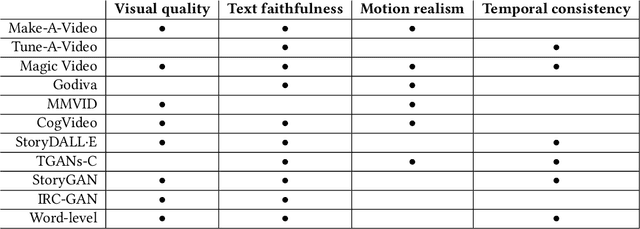
Abstract:Text-to-video generation marks a significant frontier in the rapidly evolving domain of generative AI, integrating advancements in text-to-image synthesis, video captioning, and text-guided editing. This survey critically examines the progression of text-to-video technologies, focusing on the shift from traditional generative models to the cutting-edge Sora model, highlighting developments in scalability and generalizability. Distinguishing our analysis from prior works, we offer an in-depth exploration of the technological frameworks and evolutionary pathways of these models. Additionally, we delve into practical applications and address ethical and technological challenges such as the inability to perform multiple entity handling, comprehend causal-effect learning, understand physical interaction, perceive object scaling and proportioning, and combat object hallucination which is also a long-standing problem in generative models. Our comprehensive discussion covers the topic of enablement of text-to-video generation models as human-assistive tools and world models, as well as eliciting model's shortcomings and summarizing future improvement direction that mainly centers around training datasets and evaluation metrics (both automatic and human-centered). Aimed at both newcomers and seasoned researchers, this survey seeks to catalyze further innovation and discussion in the growing field of text-to-video generation, paving the way for more reliable and practical generative artificial intelligence technologies.
 Add to Chrome
Add to Chrome Add to Firefox
Add to Firefox Add to Edge
Add to Edge